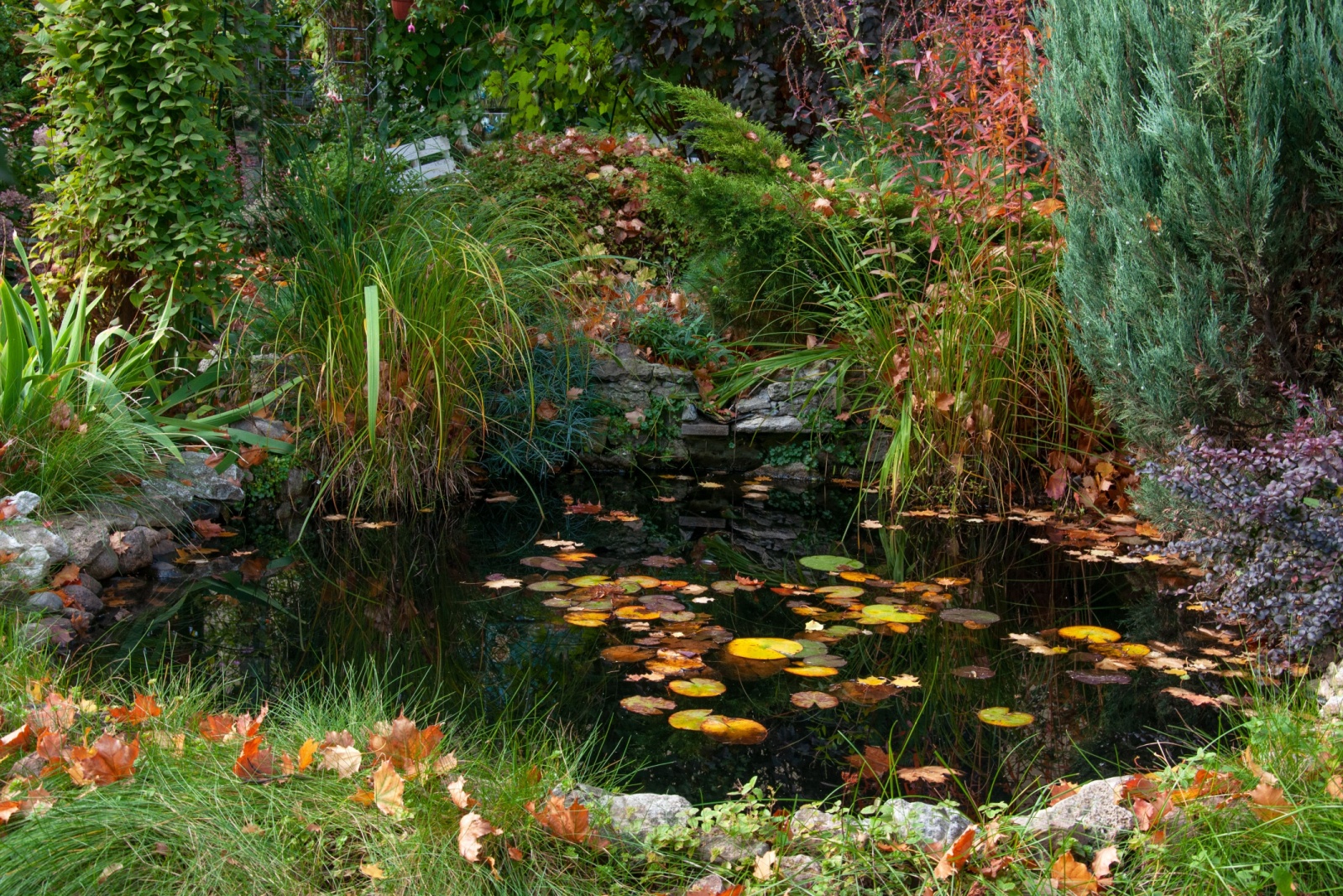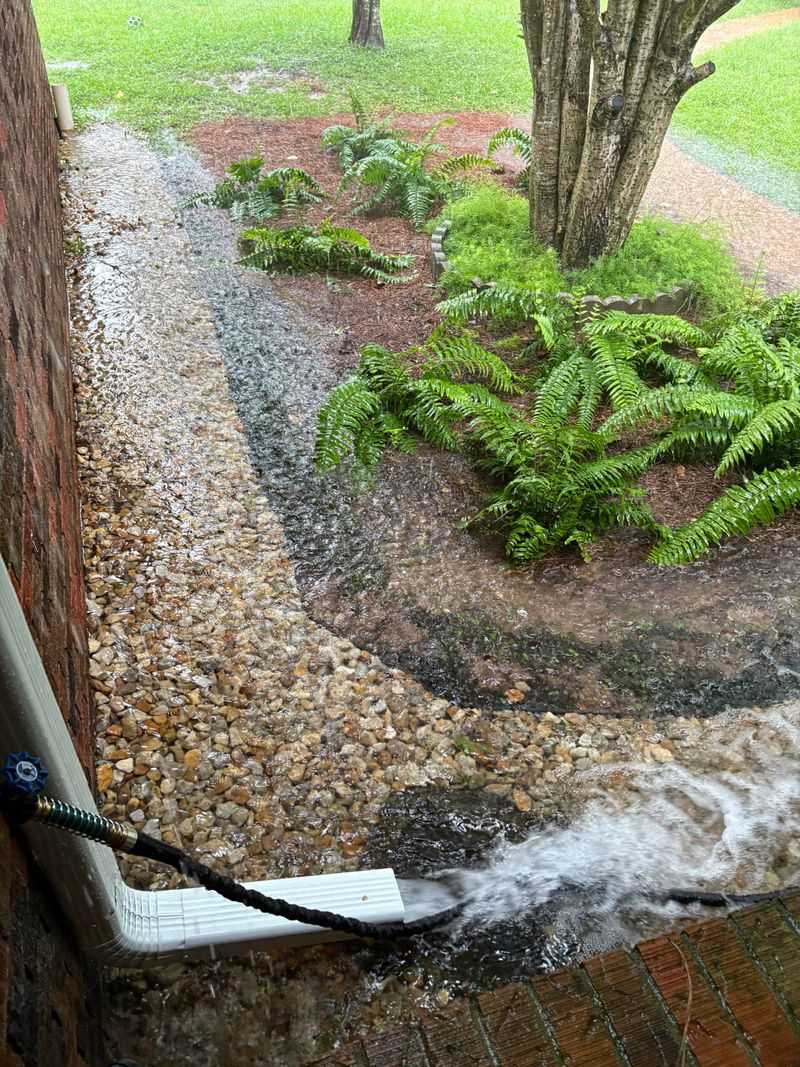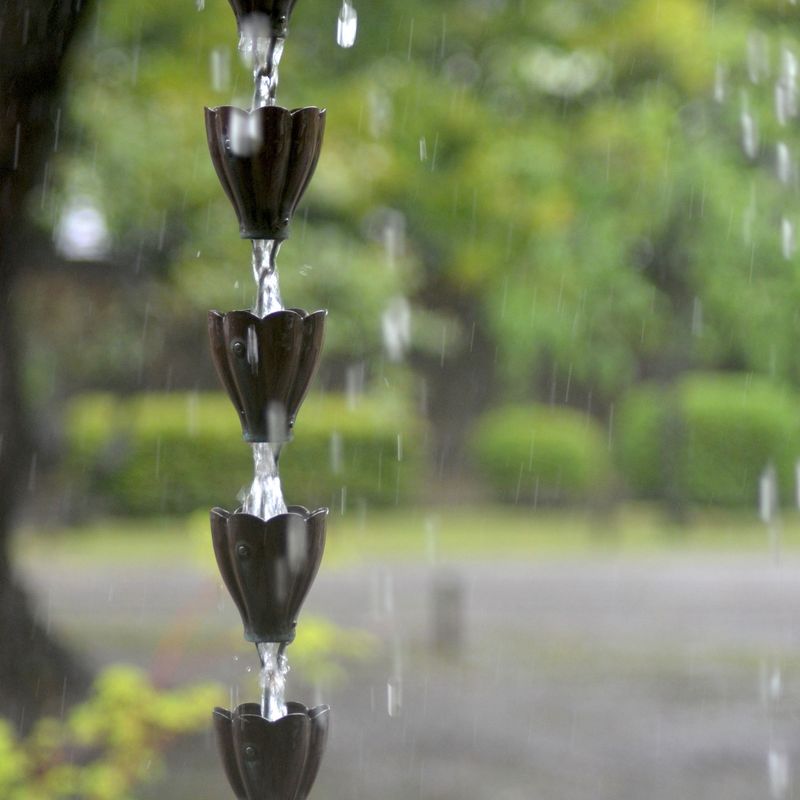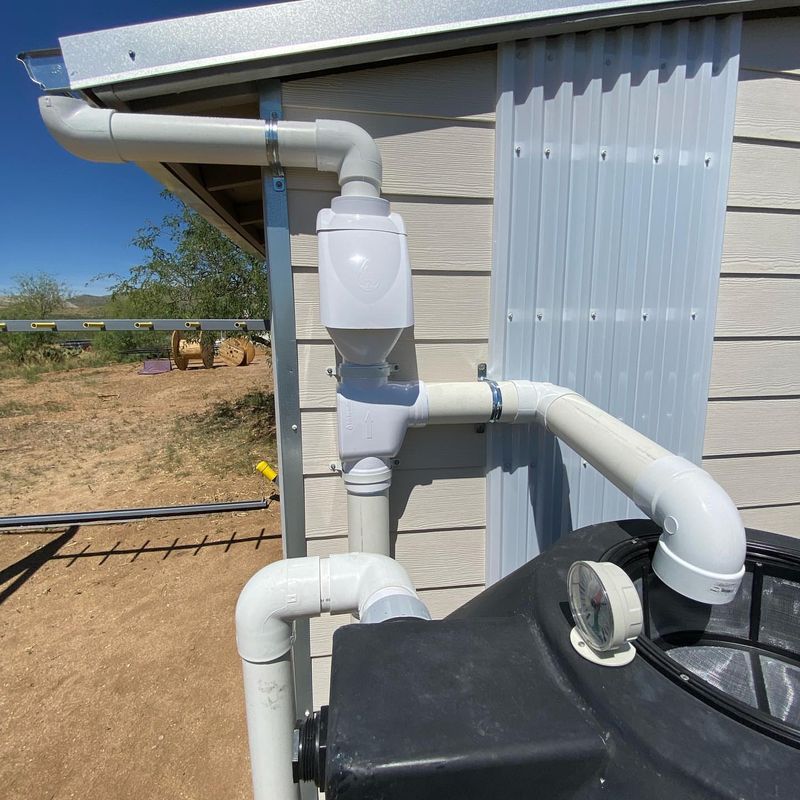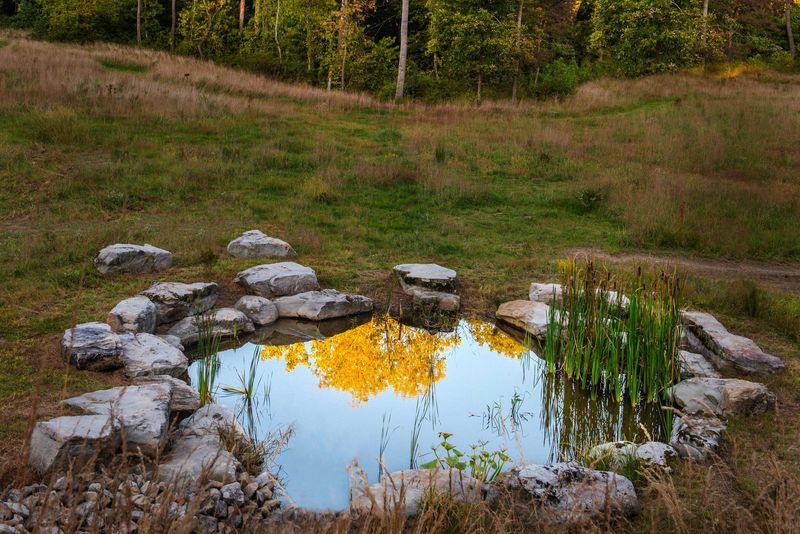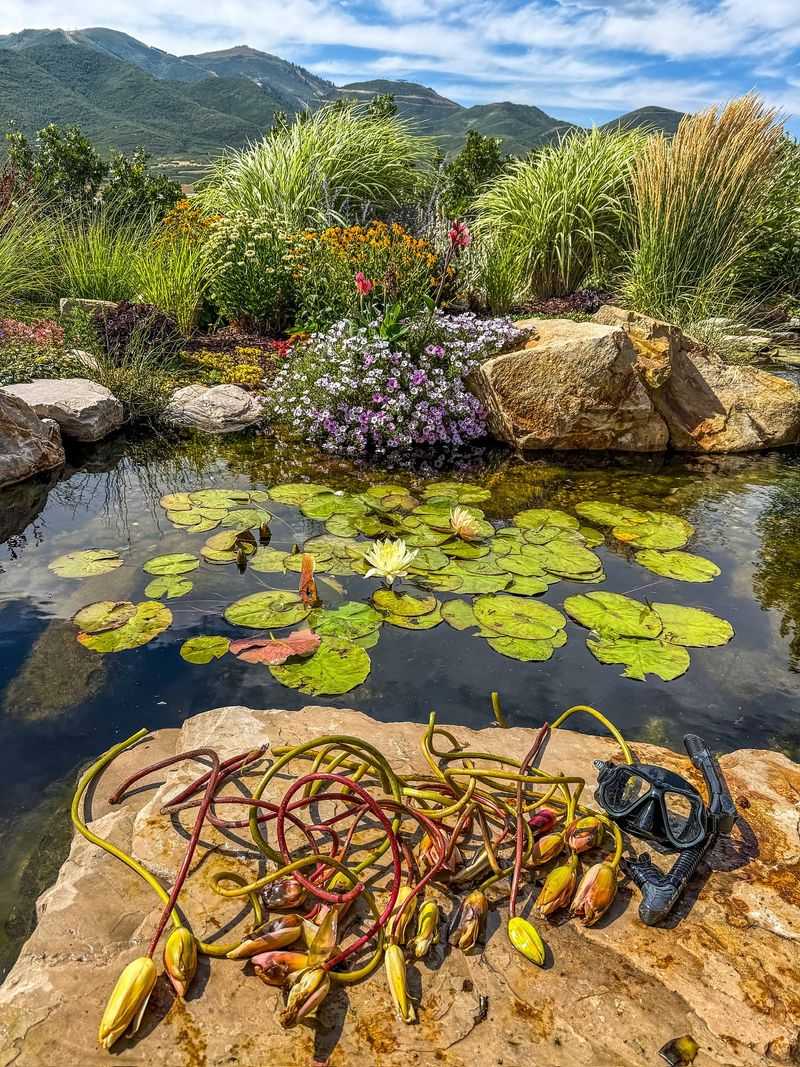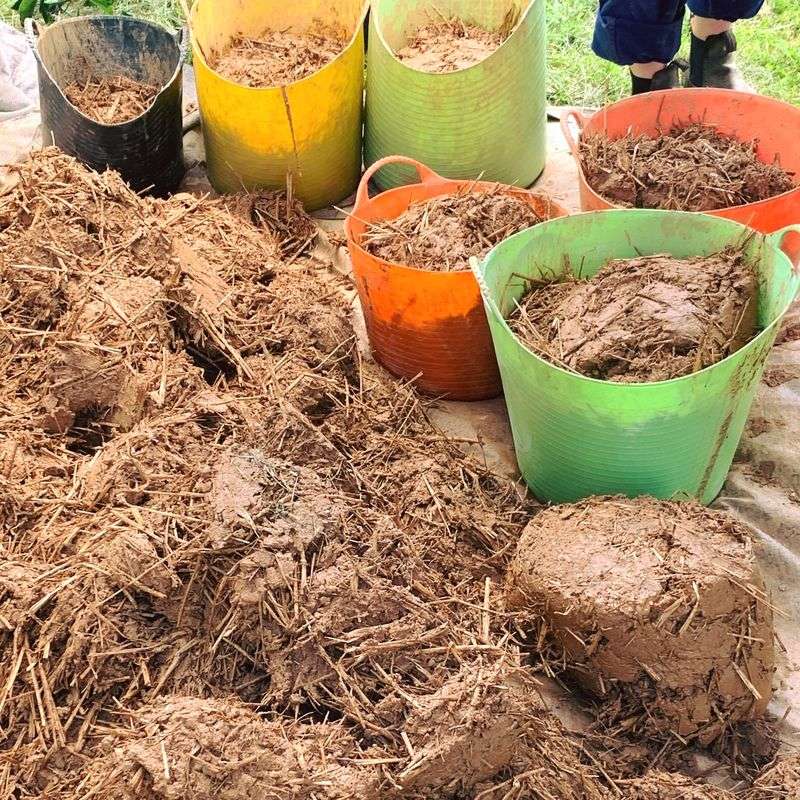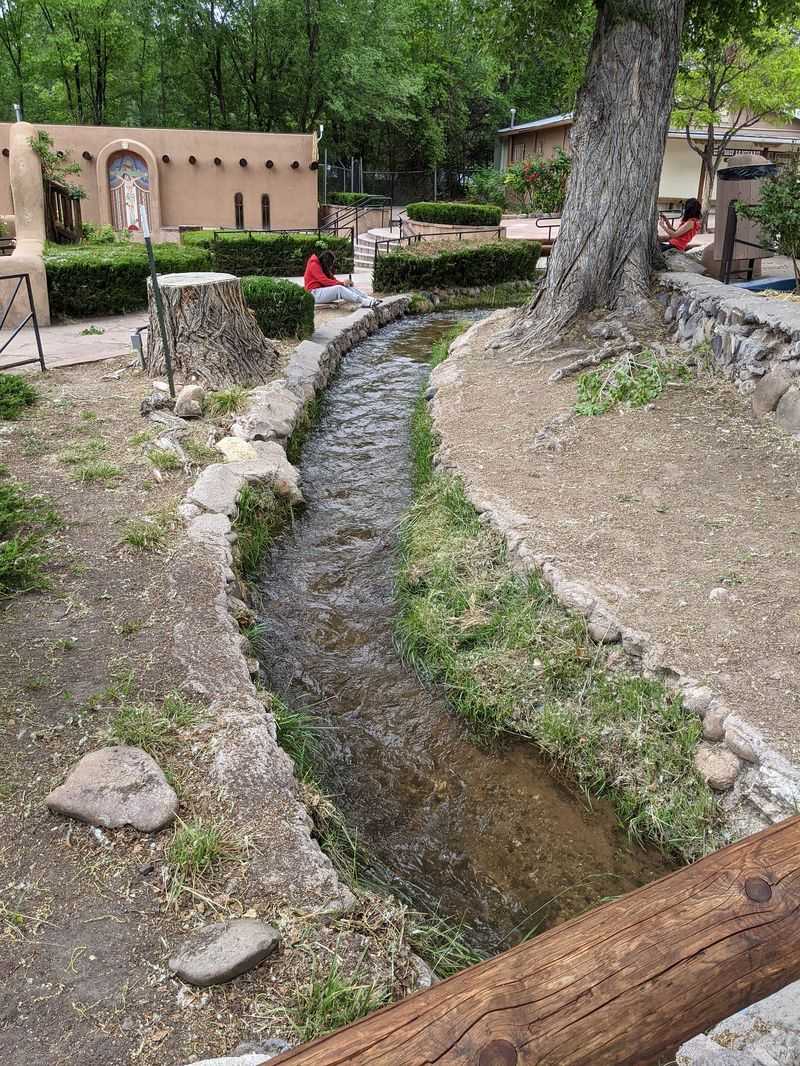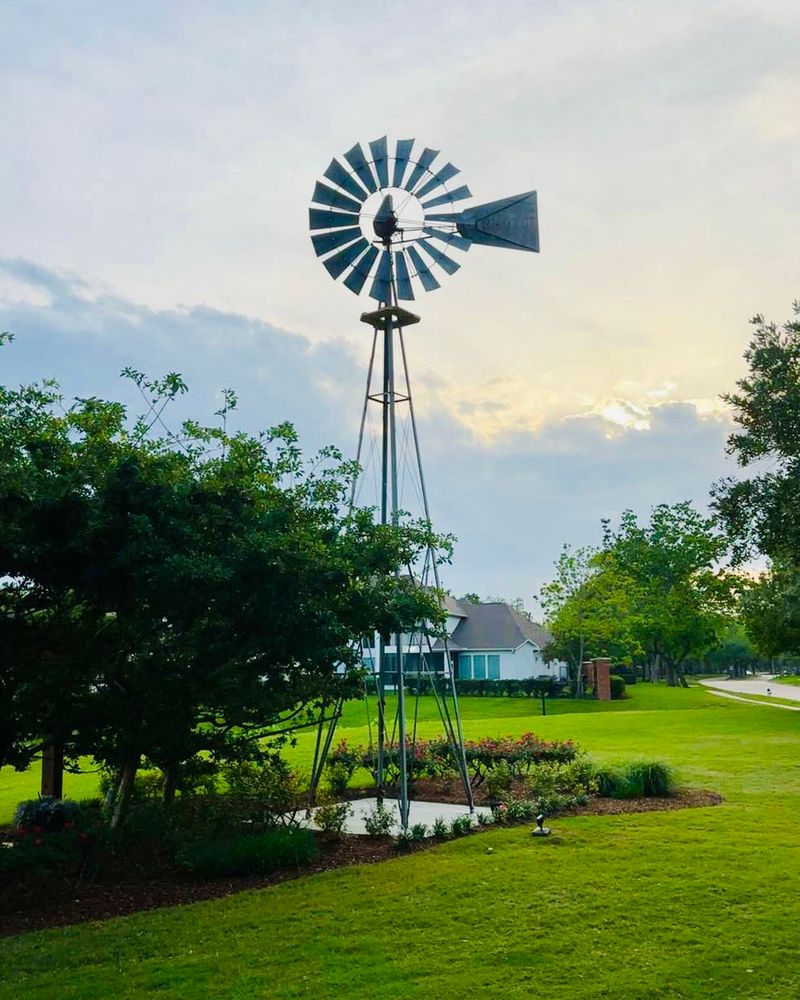Texas gardeners face unique challenges with hot summers and unpredictable rainfall patterns, making water conservation crucial for any landscape feature. A self-refilling pond offers a sustainable solution that enhances your garden while supporting local wildlife without constant maintenance.
I’ve found that properly designed ponds in Texas can thrive with minimal intervention when they work with natural water cycles instead of against them. The secret lies in thoughtful placement and using local materials that complement our state’s diverse ecosystems.
Creating a pond that refills naturally saves countless hours of maintenance while providing a cooling oasis during our scorching summers. Let’s explore nine practical approaches to building a pond that works with Texas weather rather than demanding constant attention.
1. Capture Roof Runoff With Strategic Placement
Position your pond where it naturally receives water from your roof’s drainage. During our famous Texas thunderstorms, this simple strategy can quickly refill your pond without any extra effort on your part.
Use smooth river rocks to create a natural-looking channel from downspouts to your pond. This prevents erosion while adding an attractive landscape feature that functions beautifully during rainfalls.
My neighbor’s pond near Austin has stayed filled for three years using this method, even through our drier months.
2. Install A Rain Chain Water Director
Rain chains offer a decorative alternative to traditional downspouts while guiding roof water directly to your pond. The gentle cascade creates a soothing sound during Texas rainstorms and prevents erosion that can occur with standard gutter systems.
Select copper or weather-resistant materials that will withstand our intense summer sun. The patina that develops over time adds character while still performing perfectly for years.
Combine with a small catch basin at ground level to prevent splashing and soil erosion.
3. Create A Rainwater Collection System
Harness Texas’s occasional heavy downpours by installing rain barrels or cisterns connected to your pond system. When full, these storage containers can slowly release water to your pond during drier periods.
Elevate your collection system slightly above pond level to utilize gravity for a natural, energy-free flow. A simple float valve can regulate water levels automatically, preventing overflow during major storm events.
Many Texas counties offer rebates for rainwater collection systems, making this approach budget-friendly too.
4. Design A Watershed Landscape
Reshape your yard with subtle contours that naturally channel rainwater toward your pond location. This mimics natural watersheds and works particularly well on properties with even slight slopes.
Add berms and swales strategically to slow water movement, allowing it to percolate into the soil around your pond. During our heavy Texas rain events, this design prevents runoff while replenishing groundwater that feeds your pond.
Use native grasses along these pathways to prevent erosion while filtering water naturally.
5. Tap Into Natural Springs Or High Water Tables
Some lucky Texas properties have natural springs or high water tables that can supply a pond year-round. Before digging, observe your yard after heavy rains to identify areas where water naturally collects or the soil stays damp longer.
Dig test holes during the wet season to check groundwater levels. If water fills these holes within 24 hours, you’ve likely found an ideal pond location that will partially self-supply.
My Hill Country friends discovered a small seep spring when digging their pond, providing a constant trickle even during summer.
6. Plant A Living Water Filter System
Create a natural biological filter using Texas-native aquatic plants arranged in zones around your pond. Water-loving species like pickerelweed and arrowhead naturally clean and oxygenate pond water while providing wildlife habitat.
Place water-purifying plants like rushes and sedges where runoff enters your pond. Their dense root systems trap sediment and absorb excess nutrients that would otherwise cause algae problems.
The shade from floating plants like water lilies reduces evaporation during our brutal summer heat, helping maintain water levels naturally.
7. Construct A Clay-Lined Natural Basin
Many Texas soils contain natural clay that can be used to create a water-retaining pond basin without expensive liners. Properly compacted clay forms a natural seal that holds water while allowing beneficial connections with the surrounding soil ecosystem.
Test your soil by forming a moist ball in your hand – if it holds shape well, you likely have enough clay content. Add bentonite clay if needed to improve water retention in sandier areas.
Clay-lined ponds develop healthier biological systems than those with plastic liners, supporting beneficial microorganisms.
8. Build A Greywater Diversion Channel
Safely channel greywater from outdoor activities to help maintain your pond levels. Water from rinsing garden vegetables or washing the dog can be filtered through a simple gravel and sand system before entering your pond.
Create a small settling basin filled with layers of gravel, sand, and aquatic plants to naturally clean this water. Be careful to use only biodegradable, phosphate-free soaps that won’t harm aquatic life.
During water restrictions in Dallas last summer, my pond stayed full using this method combined with rainwater collection.
9. Incorporate A Windmill-Powered Well Pump
Harness Texas’s famous winds by installing a small windmill pump to draw groundwater into your pond. These iconic structures aren’t just decorative – they’re practical solutions for areas with accessible groundwater but limited rainfall.
Modern compact versions designed for residential properties can pump up to 5 gallons per minute in good wind conditions. The intermittent flow actually benefits pond health by increasing oxygen levels.
Solar-hybrid options work well in areas like West Texas where both sun and wind are plentiful resources.

